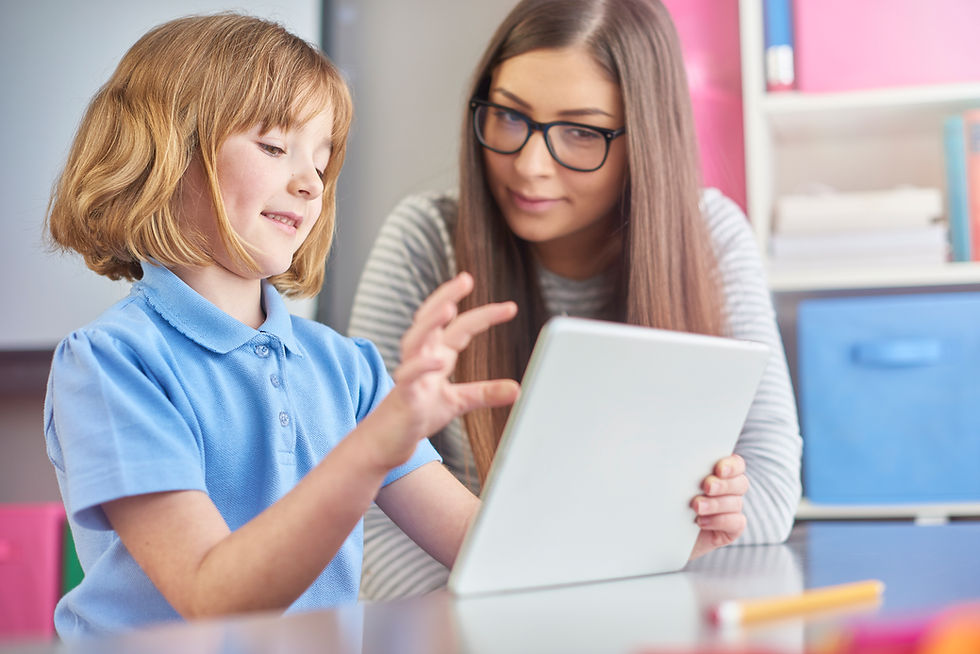6 Simple Signs That Boost Your Baby's Language Development
- Cara Bridge

- Jul 21
- 3 min read

Even before babies can speak, they already have so much they want to share. They communicate through cries, gestures, and facial expressions, but what if there were a way to help them express their needs more clearly before words come?
That’s where baby sign language comes in. Teaching simple signs gives babies a way to communicate effectively before they can talk. It can ease frustration, support early language skills, and give your little one a way to be heard.
When should I start teaching signs?
You can start introducing signs to your baby as early at 4 to 6 months, though many babies begin signing back around 8-10 months. Like walking or talking, every baby is different!
Which signs should I teach first?
You can start by using a few signs consistently throughout the day while also saying the words verbally. Once your baby starts to imitate the signs, introduce a few more! Here are 6 simple signs that can be used throughout your daily routines:
More
*Tap the fingertips of both hands together
"More" is one of the most useful and versatile signs to teach your baby. It’s simple for little hands to imitate, comes up in all kinds of daily routines, and let’s be honest—what baby doesn’t want more of their favorite things?
Here are a few easy and natural ways to introduce the sign for “more”:
Mealtime: This is one of the best times to start. Babies are highly motivated by food! Use the sign and say “more” between bites to model the connection.
Bubbles: Blow a few bubbles, pause, then sign and say “more” before continuing. Babies quickly catch on when the fun temporarily stops!
Blocks: Offer just a few blocks at a time. When your child reaches for more, use the sign and say the word before handing them additional pieces.
Swinging: Pause the swing, make eye contact, and model “more” before giving another push. It’s a great way to link action with communication.

All Done
“All done” is a great sign to use at the end of any activity. Whether you’re finishing a meal, a diaper change, or bath time, simply model the sign and say the words “all done.” With consistency, your child will begin using the sign to let you know when they’re finished, too—helping them communicate their needs and transitions more clearly.
Please
“Please” is another sign you can use throughout the day. Whenever your child shows interest in something they want, take the opportunity to model the sign while saying the word. With repetition, they’ll begin to associate “please” with polite requests and start using it to express their needs more clearly.

Help
When your child is struggling to do something, model the sign for “help” and then offer assistance. For example, if they’re trying to open a container or reach a toy, sign and say “help” before stepping in. Over time, your child will learn to use the sign to ask for help instead of getting frustrated—turning a tough moment into a chance for communication and connection.
Open
To encourage the use of the sign “open,” try giving your child a container or bag that’s tricky for them to open on their own. Wait and let them explore or attempt it first. When they start to struggle or look to you for help, model the sign and say “open” as you assist. This creates a meaningful connection between the word, the sign, and the action.
Eat
Babies love to eat! Snack time is the perfect opportunity to introduce the sign for “eat.” When your little one shows signs of hunger or it’s time for a meal, simply model the sign while saying the word “eat.” With regular use, they’ll begin to associate the sign with mealtime and may even start using it to let you know they’re hungry!

Tips and Tricks
- Be consistent: use signs during daily routines
- Always say the word aloud while signing
- Be patient and celebrate every attempt they make at using the sign
- Repeat, repeat, repeat
Baby sign language is a beautiful tool to bridge the communication gap in those early months. It empowers your baby to express themselves and strengthens your bond through shared understanding. Start small, keep it fun, and enjoy this incredible part of your baby’s development journey.
If you have concerns about your child's language development and are located in the Tampa Bay area, please contact Bridge Speech Therapy to speak with a Speech Language Pathologist.





Comments